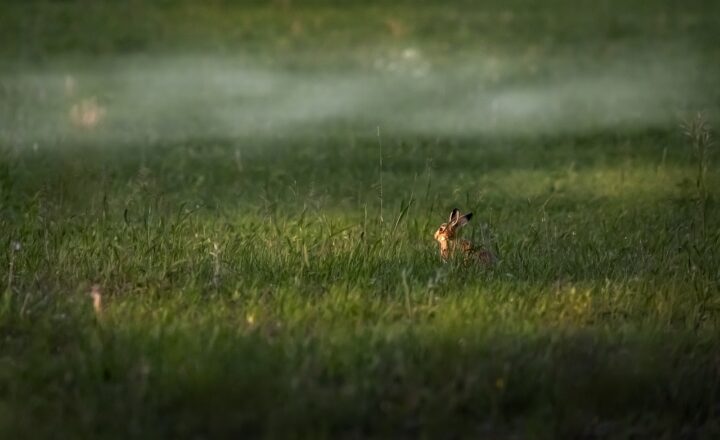Witnessing the Wild: The Essential Guide to Understanding Wildlife Behavior
November 17, 2024

Wildlife behavior is a fascinating topic that blends elements of biology, ecology, and psychology. For nature enthusiasts, understanding the behavior of wildlife not only enhances the experience of observing animals in their natural habitats but also contributes to conservation efforts and our overall understanding of ecosystems. This guide aims to delve deeply into the myriad aspects of wildlife behavior, providing both novice and avid wildlife watchers with essential insights that could enrich every encounter in the great outdoors.
1. The Basics of Wildlife Behavior
To appreciate wildlife behavior, it’s essential to grasp the foundational concepts that govern animal actions. Wildlife behavior refers to the ways in which animals interact with each other, their environment, and their own species. This can include feeding, mating, communication, and movements.
- Innate vs. Learned Behavior: Innate behaviors are instinctive and often essential for survival, such as migration in birds or the hunting strategies of wolves. In contrast, learned behaviors are acquired through experience, such as finding food sources or avoiding predators.
- Social Structures: Many animals operate within social hierarchies. Understanding these structures can provide valuable insights into their behavior, such as the roles of dominant and submissive individuals in a pack of wolves or the complex social interactions in elephant herds.
- Communication: Animals communicate in various ways, from vocalizations to body language and scent markings. Being able to identify these forms of communication can enhance your observations and understanding of why animals act in particular ways.
Understanding these basics forms the foundation for deeper explorations into specific behaviors animals exhibit in nature.
2. Observing Wildlife Behavior in the Field
When venturing into natural habitats, having the right approach can yield incredible opportunities to witness wildlife behavior firsthand. Here are some tips to enhance your observation skills:
- Know Where to Look: Different animals thrive in various habitats. Research local ecosystems to determine what types of wildlife are prevalent in that area—be it a forest, wetland, or alpine region—and focus your explorations there.
- Use Binoculars & Cameras: High-quality binoculars or cameras with zoom features will help you closely observe animals without disturbing them. This can be especially useful when observing skittish animals that may flee at the first sound of footsteps.
- Practice Patience: Wildlife watching often requires waiting quietly to increase your chances of seeing animals in action. Many memorable moments happen when you’re simply patient and observant in a small, quiet spot within their habitat.
By employing these techniques, you can significantly enhance your wildlife observation experience, leading to countless rewarding encounters.
3. Significant Behaviors to Observe
Understanding key behaviors exhibited by wildlife can radically transform your observation experiences. Here are some behaviors to look for:
- Foraging: Watch how animals search for food, which may include scavenging, hunting, or grazing. Pay attention to their strategies, such as the way foxes stalk prey or how deer use their senses to detect threats while feeding.
- Mating Rituals: Mating season offers a front-row seat to the fascinating courtship displays seen in many species, from the elaborate dances of birds of paradise to the trumpeting calls of bulls during the rut. Respectful observation can provide insights into their reproductive behaviors.
- Nurturing Young: Observing parental care in species like penguins or primates can be eye-opening. Watch how these animals protect and teach their young, and notice the differences in parenting behaviors among various species.
These behaviors provide not only captivating sights but also vital lessons about the specific adaptations that help animals survive and thrive in their environments.
4. The Impact of Seasonality on Wildlife Behavior
Animal behavior is profoundly influenced by seasonal changes, affecting feeding patterns, migration, and breeding cycles. Knowing how animals react to changing seasons can prepare you for what to expect:
- Winter Survival Strategies: Cold months can prompt behaviors like hibernation in bears or flocking in birds for warmth. Observing these adaptations gives insight into how animals combat harsh conditions.
- Spring Awakening: Many species engage in courtship and nesting behaviors during spring. Additionally, migratory species return to breeding grounds, making this a prime time for observation of courtship displays and nesting activities.
- Summer Recreation: Warmer months often lead to young animals venturing out, exploring their environment. Noticing the play behavior amongst young animals is a joyous highlight of summer observation.
- Autumn Preparations: In autumn, many animals prepare for winter through behaviors such as foraging and caching food. Observing these activities can provide insights into their long-term survival strategies.
By appreciating the seasonal rhythms of wildlife behavior, you can better time your explorations and elevate your viewing experience.
5. The Role of Conservation in Wildlife Behavior Understanding
Understanding wildlife behavior is crucial for effective wildlife conservation efforts. As natural habitats face numerous threats, such as climate change and habitat destruction, knowing how animals react to these pressures can help conservationists develop impactful strategies:
- Habitat Preservation: Monitoring wildlife behavior can indicate the health of ecosystems. If wildlife behaviors change dramatically, it often serves as a warning sign of ecological distress, such as a decline in food sources or habitat quality.
- Conflict Mitigation: Understanding behaviors can help manage conflicts between humans and wildlife. Such insights are invaluable in creating strategies that minimize negative interactions, ensuring the survival of both wildlife and people.
- Educational Outreach: Wildlife observations can be powerful learning tools, inspiring communities to appreciate local wildlife and participate in conservation activities.
Each observation made in the field contributes to a greater understanding of wildlife behavior, which ultimately aids conservation efforts in protecting these species for future generations.
Conclusion
In conclusion, understanding wildlife behavior adds depth to observing animals and can significantly impact conservation efforts. By engaging in respectful wildlife observation and learning about the intricate behaviors that govern their lives, we not only enrich our own experiences in nature but also play a role in protecting these beautiful creatures.
Whether you’re hiking in the woods, birdwatching in your backyard, or visiting a national park, keep your eyes open and be patient. The wild offers numerous lessons—if we take the time to observe and understand its inhabitants. Start observing today and become a witness to the wild.
Happy wildlife watching!







